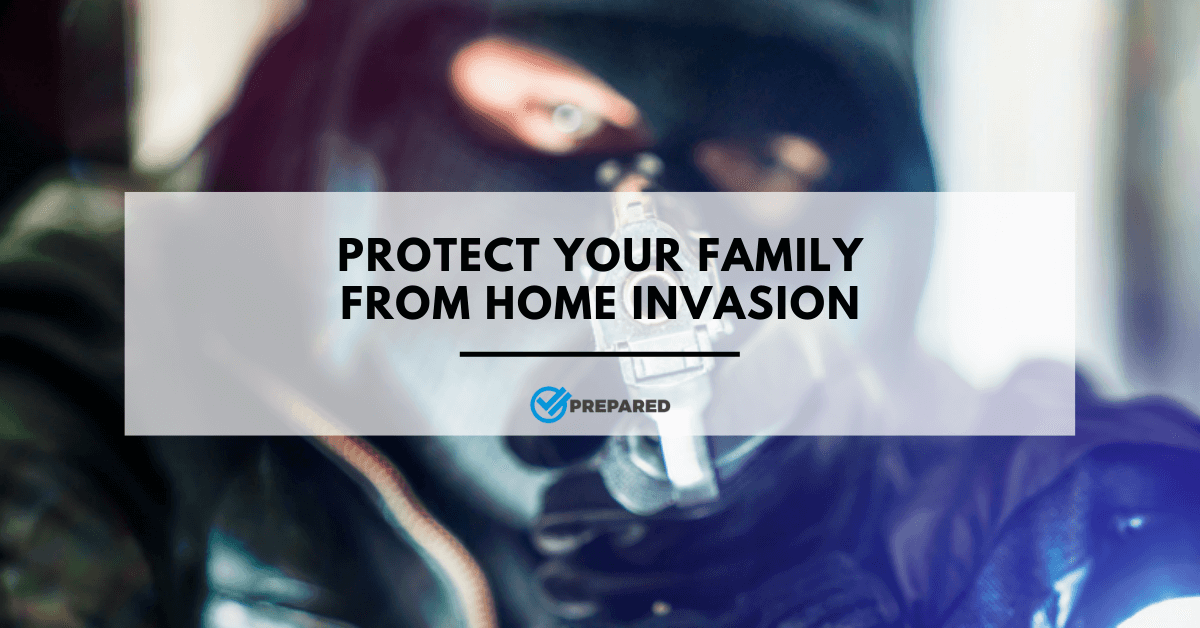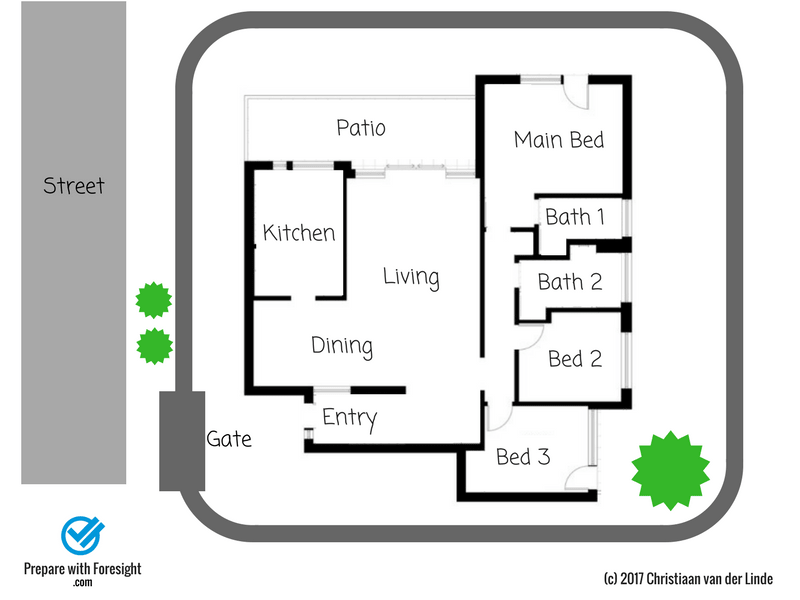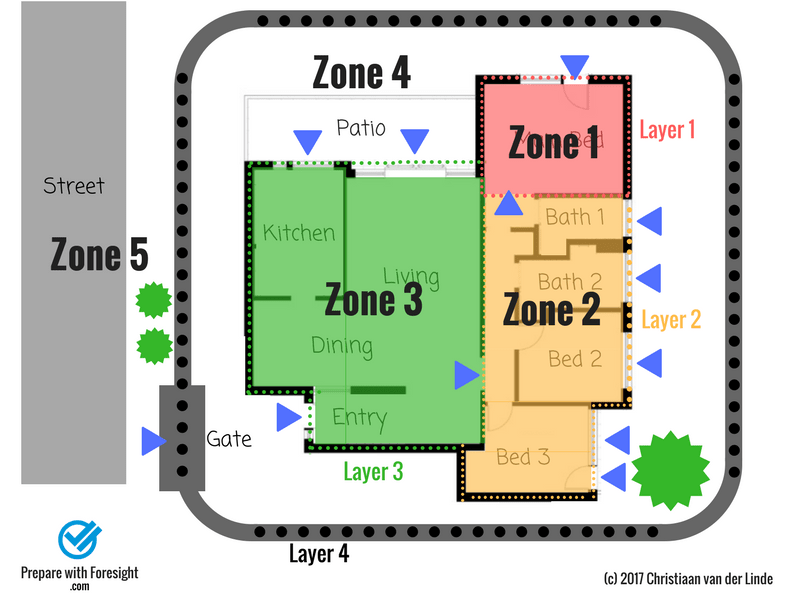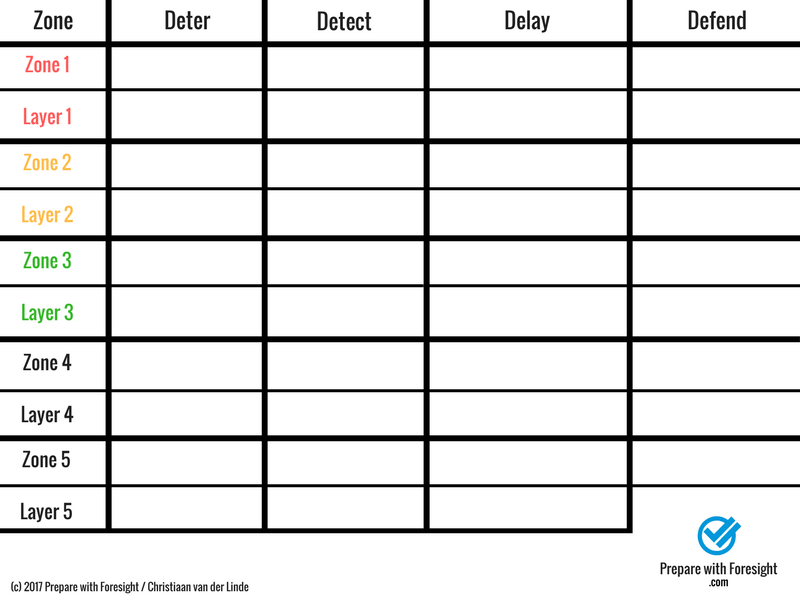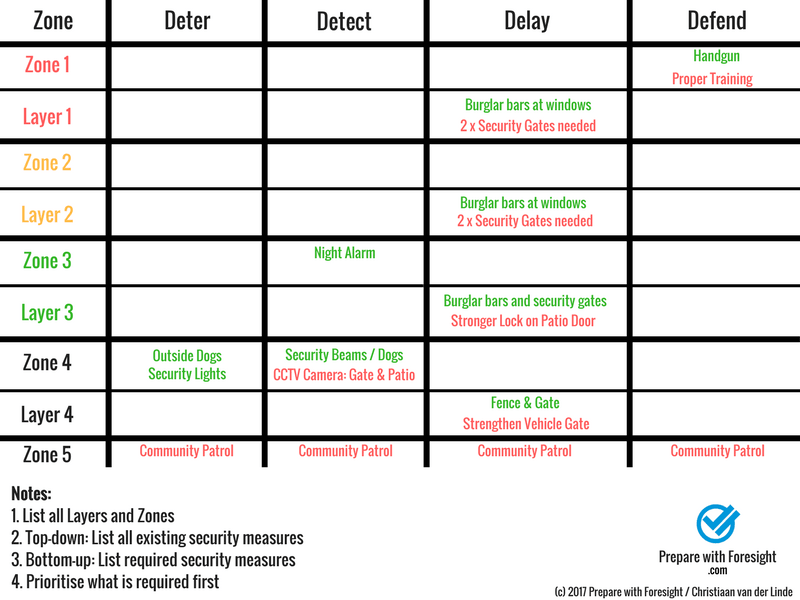Many people live in fear of a violent home invasion, while others live with emotional and physical scars after having suffered a violent attack in their own homes. The reality is that criminals can attack any home, it doesn’t matter if it is an urban apartment or a rural farmstead.
In some attacks, the victims are targeted in the early evening; often soon after arriving home from work. During this time, the occupants of the house are doing late afternoon chores, and feel more relaxed. During this time, security doors are often left open, or alarm systems switched off. In other instances, criminals target victims in the early hours of the morning, hoping to enter the property undetected, and surprising the victims while they sleep.
Even though any person can become a victim of this type of attack, there are some steps you can take to reduce the risk of suffering a violent home invasion. By understanding a few principles, you can take steps to protect yourself and your family.
The Cause of Violent Home Invasions: The Criminal
The risk of a violent home invasion would be non-existent if it was not for the criminal. This post will not go into the reasons why people choose to attack others, but there are a few aspects to consider.
Criminal Mind 101: Risk vs Reward
Similar to most people, the attacker will base his decision to attack on a risk-reward estimate. For the attacker, the upside of the risk relates to gaining the sought-after profit from the attack. This speaks to the motivation for undertaking the violent home invasion and can include financial gain, taking revenge on the victim, or other motivations. The downside risk associated with the attack includes the possibility of being caught, injured, or killed during the attack.
This decision-making process is often evident in the target criminals choose. To reduce the risk, attackers often target individuals perceived as being vulnerable, including the aged, people living alone, or in isolated homes. To increase the reward, attackers often target homes or families perceived as having money or items such as valuable electronics, or weapons.
Criminals do Homework
To understand the risk-reward balance associated with the possible targets, the attacker will often do a substantial amount of research and planning before the attack. It is therefore important to realize that an attacker will generally only attack a specific target when he feels the risk-reward balance is tilted in his favor; this implies that the odds are, based on the attacker’s perception, not in the victim’s favor.
This brings us to the first strategy to protect your family against a violent home invasion – Change the perceived Risk-Reward balance against the attacker.
Luckily, the attacker is only human
It is difficult to believe that a fellow human being is capable of the cruelty and level of violence often inflicted on victims during violent home invasions. Survivors of violent home invasions often report that they felt helpless or powerless during an attack. This is understandable since the attacker will only attack a target once he feels confident of his chances of success. In other words, the attacker will play to his strengths while exploiting the weaknesses of the victims.
Some attackers can also be in an altered mental state during the attack. Not only will the attacker already be nervous, but some attackers also use drugs or alcohol before an attack, and this can impair their judgement and increase their level of aggression, causing them to do the unthinkable. However, it is important to remember that each attacker is also still a human being, and by default, also has particular weaknesses. The second strategy to protect your family from a violent home invasion is to develop your strengths in order to exploit the attacker’s weaknesses.
Protecting your family against a violent home invasion
There are undoubtedly certain steps you can take to improve your chances of survival if you find yourself the victim of a violent home invasion. It is important to familiarise yourself with the do’s and don’ts of surviving the situation. However, prevention is better than cure, and the remainder of this post will focus on two principles that you can use to reduce the risk of a violent home invasion.
Principle 1: Layers of Security
The principle of layered security is commonly used in protecting critical assets and high-risk targets in the government or private sector. However, this principle is not always fully understood or applied by homeowners in protecting their families.
The basis of this principle is that, even though you desire a certain level of security in your house, yard/farm, and neighborhood, it is impossible to keep the entire neighborhood free from any threats. Not only will it be expensive, but you might not have the authority to make changes in your larger neighborhood. You, therefore, need to decide what an appropriate level of security is for each area of your surroundings and then prioritize the protection of high-value areas. This can be done by using zones and layers of protection.
Step 1: Understand your property
Start by making a drawing of your house. You don’t need an official blueprint, a basic line drawing showing the rooms and features around your house will be sufficient.
Identify the various rooms, location of windows and doors, and features such as large trees, roads and footpaths.
Step 2: Identify vulnerable areas
The next step is to identify the most valuable or sensitive area of your house. This is Zone 1 and is the area you want to protect the most. In most cases, this will be the main bedroom or bathroom of your house. This zone should also be your family’s ‘panic room’, and the room where you will go in case of an attack. The boundary of Zone 1 is called Layer 1 and refers to the shell that protects Zone 1.
The next step is to identify the zone immediately outside Zone 1. This will be Zone 2. Zone 2 is still an important area, but subject to less security and protection than Zone 1. The external boundary of Zone 2 is called Layer 2. Continue with this process until you have covered your entire house and immediate neighborhood.
Step 3: Identify the points of entry
Finally, take some time to identify the possible points of entry in each layer – these are points where someone can cross between zones and can include openings, doors, gates and windows. Having done this, you might end up with something similar to the picture below:
Your drawing should provide you with a basic framework to start planning the security of your home. But for this, you will need Principle 2: The 4D’s of Security.
Principle 2: The 4Ds: Deter, Detect, Delay, Defend
The 4D’s of perimeter security refer to the process to Deter, Detect, Delay and Defending against a security threat. You will find other variations on these 4D’s, with some writers adding additional D’s. However, we found that these 4D’s are sufficient in communicating the principle of perimeter protection.
Each one of the D’s refers to a type of measure that can be implemented to improve your protection against a security threat. Each of the D’s is discussed below:
Deter
The first D is to Deter a threat. Various methods can be used, but on the basic level, deterrence comes down to winning a psychological battle with a potential attacker. If you can influence the perception of a potential attacker to believe the Risk-Reward balance is not in his favor, you can win the battle before it even starts.
Detect
If you were unable to deter a potential attacker, you at least want to become aware of his presence as soon as possible. This is what detection, refers to. Detection can include any measure that informs you that something is not right. Measures to detect intruders can range from regular security patrols to identify suspicious individuals, CCTV cameras, security beams on the perimeter, automatic security lights, or even a barking dog.
Delay
The third D refers to the process of delaying an attacker. Whether or not you detected the presence of an intruder, you want to increase the time it takes for the attacker to get to whatever he is looking for. This not only provides you with more time to detect his presence (if you have not done so already), but it also allows more time to respond before he can do too much damage. Physical security barriers such as strong security doors, security gates or burglar bars can be effective in delaying an attacker.
Defend
The final D refers to the act of defending yourself against an attacker. This can take various forms, ranging in both techniques and equipment. It is important to know how to defend yourself against an attacker. Simply owning a gun is not good enough if you don’t know how to use it safely. A gun is only a tool, therefore, if you decide to buy a gun (or already own a gun), please also undergo proper training and learn how to use, maintain and store it safely.
This final D is an important part of the 4D’s, however, using a weapon should be seen as your last resort.
Put it Together
Now that you know about the Layers of Security and the 4D’s of Perimeter Security, you can use it to consider the drawing you made of your home in the previous 3 steps.
Step 4: List the Zones, Layers and D’s
To continue, take a sheet of paper and draw 5 columns. In the first column, list the zones and layers you have identified from the drawing of your home and surrounding area. Starting with Zone 1 and Layer 1, list all remaining Zones and Layers you market on your drawing. At the top of the remaining 4 columns, list each one of the 4D’s. Your sheet should look similar to this:
Now go down the list, and identify any existing security measures that are already in place in each of these zones and layers. Consider any active or passive security measures, including alarms, fences, gates, burglar bars, or security lights.
Once you have done this, go through the list again, but this time, work from the bottom of the list to the top and imagine any routes an intruder can take to arrive at Zone 1. While doing this, identify any gaps where you feel additional security measures are required. Consider if there are any physical security measures you can add to the property.
Remember, you do not have to address all of the D’s in all the zones. However, make sure that a possible attacker will encounter at least a selection of measures across the zones.
Also, remember that an attacker will try to find the shortest route to the target, so he might not necessarily move through all the Zones in the order you listed. Therefore, pay particular attention to areas where you have a single layer between a high and low numbered zone – for example, the layer between Zone 1 and Zone 4 at the main bedroom in the above drawing. Any gaps in those layers need to be particularly secure.
Once you have done this, your sheet might look similar to this:
Finally, if you find that you need to add additional measures to any of the zones or layers, prioritize the identified measures, and make a plan to get it done. If you face budget or time constraints, break it up into smaller projects, and start small by doing what you can.
Some Words of Caution
There are three additional aspects you need to consider.
Quality Construction and Design: If you need to install physical security barriers such as security bars or gates, make sure it is of high quality, both in design and manufacturing. You will be surprised to see how a person can climb through security bars or through a gap in a security gate. But a strong gate can also make a substantial difference in keeping people out.
Escape Routes: Secondly, be careful not to trap yourself in your own home. Always keep an escape route for yourself. This can be done by installing a lockable sliding security barrier at one or two of your windows. This will ensure that you can get out of your house in the event of a fire or if the other exits are blocked. The same applies to second-story windows as well.
Get Away: Lastly, understand that there might be some situations where it will not be safe to stay at home, irrespective of how many security measures you implement. In these cases, you need to leave your home and find a safe area. We discuss this in more detail in our post on the Principles of Personal Preparedness.
Now what?
Now that you have been introduced to these principles, take some time and assess the security of your home. If you identify any gaps, take steps to fix them, and consider self-defence or combat training if you need to. Discuss basic security disciplines with your family, including keeping doors locked and the importance of situational awareness. This can all reduce your risk of suffering a violent home invasion.
Finally, if you found this article useful, please take the time to share it with others. By sharing this post on your social media account, you can help to protect another family from a violent home invasion.

Chris was born and raised in South Africa and has worked in the field of risk management, organisational resilience, and business continuity for more than a decade. During his career he has seen how private and public sector organisations benefit from effective risk management and business continuity planning. Realising that families and communities can also benefit from the same tools, methodologies, and principles, he started Prepare with Foresight.
Prepare with Foresight was launched to assist individuals and families to have the peace of mind that they will be able to recover from and successfully adapt to the consequences of adverse events.

